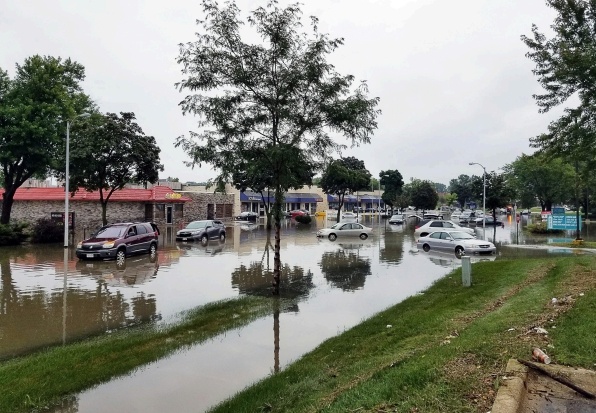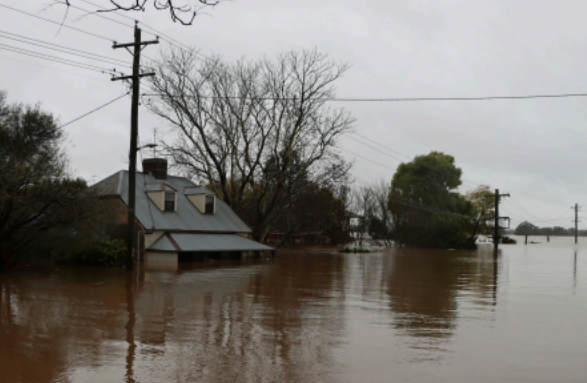

Where were the Texas Floods?
Areas that were hit hardest by the floods was Kerr County where the Guadalupe River rose to critical levels in multiple locations. Kerrville is located about 100 miles west from Austin and 65 miles northwest of San Antonio.
What Led to the Flash Floods?
The worst damage took place in an area known as the “Flash Flood Alley” due to its long history of flooding. The surrounding environment makes it especially vulnerable, with steep slopes, rocky ground and narrow river beds that react faster in heavy rainfall. Historical records found that the Guadalupe River has experienced major flooding more than a dozen times in the last century, proving how recently floods occur. In 1987, floodwaters rose to 31 feet in nearby Comfort, taking the life of 10 people, after camp buses were caught in the floods. Drought conditions in the region had also made flooding worse, because dry soil is unable to absorb great amounts of sudden rainfall. According to scientists, climate change intensifies both droughts and flooding because a warmer climate can increase intense dryness as well as increase extreme precipitation.

From July 4 to 7, as much as 20 inches of rain fell, breaking local records. The Guadalupe River near Kerrville surged from about 7 to 29 feet within hours, levels that have not been seen since at least 1966. This flash flood stands as the deadliest inland flood due to the rainfall in the U.S. As of July 11, the recorded amounts of death exceeds a 121, with at least 173 people missing. The rapidly moving waters swept away cabins, vehicles, and lives, devastating communities in a single morning.

Camp Mystic: Tragedy at a Girls’ Camp
One of the most horrendous accidents occurred at Camp Mystic, an all-girls Christian summer camp located along the Guadalupe River near Hunt. The sudden rainfall took over the camp’s riverside cabins just as campers and counselors slept. At least 27 people, including many children, had lost their lives. The flood had caused great chaos, with children clinging out to trees and some running for their lives.
Rescue and Recovery Operations
During the floods, there were failures in alerting the citizens about flood warnings, especially in the areas where the floods hit. The delay may have added more cause to the disaster, not being able to inform the citizens quickly enough. The alert was delayed, eventually informing the victims later on. However, volunteer firefighters reported witnessing the river rising early on, with dispatchers describing rescues for higher‑ground warnings. Radio reports had also taken action, informing people about the floods, yet delays persisted in official confirmation. Initial rescues were also led by over 1,700 first responders, including the Coast Guard, Army National Guard, volunteer firefighters, and even Mexican crews operating along the river. Many people had contributed to the disaster caused by the sudden, unexpected floods.
Economic Disaster
Approximates of economic losses range from $18 to $22 billion, damage caused to homes, businesses, tourism, and infrastructure, including widespread power outages affecting nearly 5,000 homes. Across the region, many debris had fallen on roadways and damaged bridges were given efforts of recovery.
Grief and Resilience Among Communities
Communities across Kerr County are organizing fundraiser events in the times of grief. At Camp Mystic, surviving campers gathered and honored lost friends, and consoled grieving families. In the weeks ahead, nonprofits, religious groups, and volunteer organizations are reaching out to help with trauma counseling, memorial services, and long-term rebuilding
efforts. Memorials are being held on riverbanks where cabins once stood, honoring victims, both elders and young campers.
After Effects
This flood has urged new solutions on preventing other disasters by enhancing emergency alerting systems, mapping and zoning floods, and easily adapting into the climate. Furthermore, as July advances into August, the priority shifts from rescue to recovery. For grieving families, healing may take years, but both survivors and officials emphasize the importance of learning from this tragedy to prevent future loss. After this horrendous disaster, more solutions are being discovered to prevent further losses.
In July 2025, intense amounts of rainfall had caused disaster and grief across the country of Texas, with Kerr County being the most affected by the flash floods. The result of the flash floods broke record levels, with river levels rising at an estimated 26 feet in less than an hour, causing multiple losses of life.
<Student Reporter Jacob Lee>Village Christian School jacobbest2011@gmail.coml







